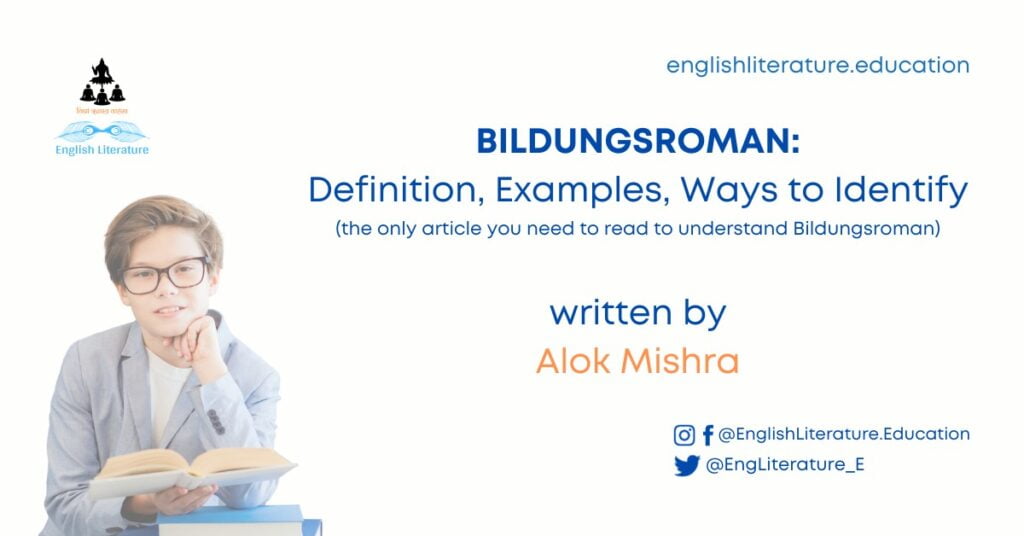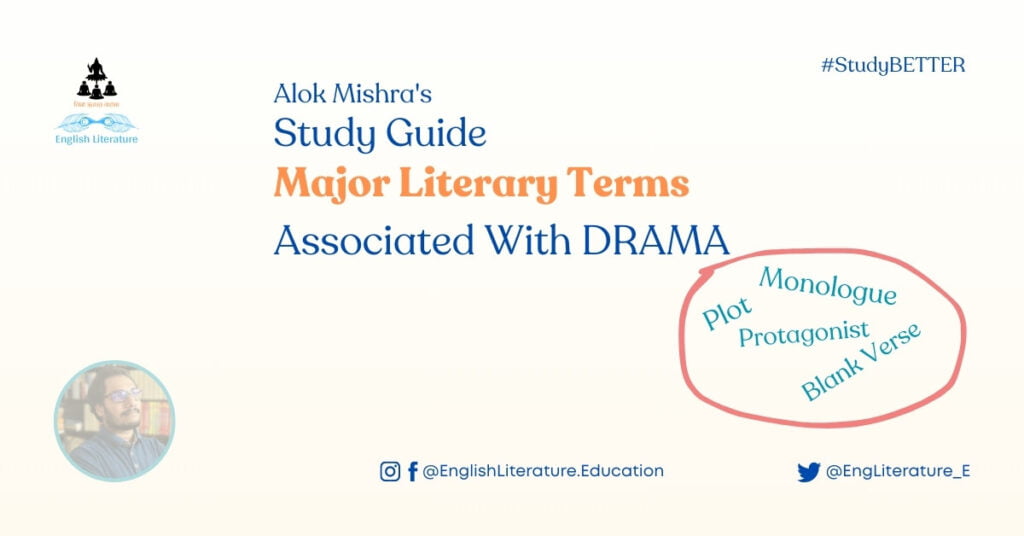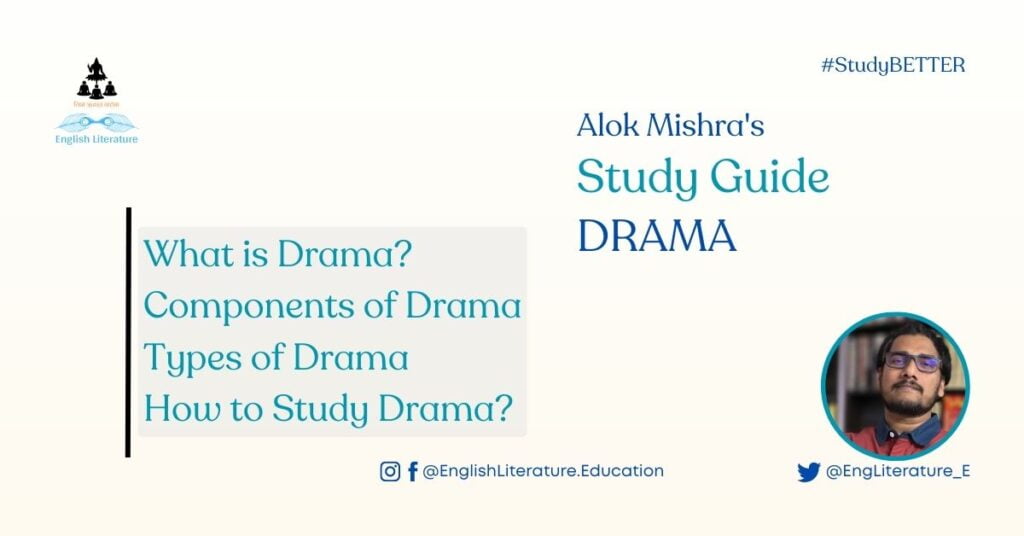This article will help students of English Literature (especially new students) understand the literary terms associated with poetry. As one starts reading, interpreting and studying poetry academically, many new things appear on the study table. And if the words and their meanings are unknown, many students of literature might find themselves confused and helpless. For example, a few frequent appearances on the list of literary terms associated with a poem are lyrics, metaphor, figure of speech, rhyme, verse, poem vs poetry, poetic truth, hyperbole, abstract, universal, irony, ode, satire, pastoral, sonnet, couplet, octave, and many others (you can guess). So, read this article to understand these regular terms that you will certainly encounter as you begin studying poetry in your first year (BA) or at any level.
First of all, let’s deal with general questions many may ask you.
Q: What is poetry?
A: Poetry, individually, is a literary work that uses intense expressions to describe ideas and emotions. It is often composed in verse (with rhythm and lyrical qualities).
Poetry, also, is a genre of literature. A collection of poems or the art of writing poems (of anyone) can also be called poetry.
Q: What is a poem?
A: A poem is (mostly) a literary composition expressing ideas and emotions in a lyrical, rhythmic and decorative way. A poem is generally short in length. However, there are longer poems as well.
Q: What is the rhyme scheme in a poem?
A: The rhyme scheme of any poem is the systematic arrangement of lines according to the last sound of the last word of the line.
“All things are subject to decay
and when fate summons, monarchs must obey.”
(Mac Flecknoe, John Dryden)
Decay and obey are the rhyming words.
Now, let’s understand the literary terms frequently used while studying poetry.
Sonnet: In short, a Sonnet is a poem having 14 lines. Petrarchan sonnets have two stanzas – an 8-line octave and a 6-line sestet. Shakespearean Sonnets have three stanzas of four lines each and a concluding couplet, following the rhyme scheme abab cdcd efef gg. Many poets have experimented with the form of sonnets as well. For instance, Miltonic Sonnets do not have breaks between the octave and the sestet parts. Edmund Spenser, the Elizabethan court poet, used the same form as Shakespeare but with an interlocked rhyme scheme – abab, bcbc, cdcd, ee.
Rhyme Scheme: The rhyme scheme of any poem is the arrangement of lines according to the last sound of the last word in the lines of the poem. You can easily find out the rhyme scheme of the poem by reading the poem once (or twice if the poem is a little longer). For example, Alexander Pope used to write his poems in ‘heroic couplet’ – the last words rhyme in every couple of lines. You can remember any line from Rape of the Lock, An Epistle to Dr Arbuthnot or any other composition. The rhyme scheme, generally, is important in shorter poems only. Longer poems, like epics or poems in different episodes, follow or don’t follow any definite rhyme scheme.
Ode: An ode is basically a lyrical poem often written to eulogise, appreciate or describe a human, an abstract subject, an event or universal truth. An ode is often an elaborate exhibition with a decorative structure. Major types of odes that you will find are Horatian Odes and Pindaric Odes. Pindaric Odes follow a pattern that has three divisions – strophe, antistrophe and epode. Examples of odes in English poetry are many. Ode to a Nightingale by John Keats, Ode to the West Wind by Shelley, Ode on the Spring by Thomas Gray, etc. These are some of the famous examples of an Ode.
Elegy: An elegy is a type of poem that poets write to mourn the death of someone (often near and dear). Famous elegies are Lycidas by John Milton, Adonais by Shelley (written on the death of John Keats), and In Memoriam by Tennyson. However, the term is not limited to the poetical works composed on the deaths. Many elegies are based on melancholic contemplations. For example, the famous work by Thomas Gray, An Elegy Written in a Country Churchyard.
Iambic Pentameter: This is a term that new students of English literature may hear more than often. Iambic Pentameter is a rhythmic pattern in which a line in a poem is written in such a way that one stressed syllable follows an unstressed one. An Iambic Pentameter consists of 10 syllables. Famous examples are lines by Shakespeare in his famous sonnets. To make it simple, stressed syllables take more time in uttering compared to unstressed ones. Try saying these words and feel them:
“Shall I compare thee to a summer’s day?”
Pastoral Poem: A poem having a rural landscape, rustic characters, countryside sceneries, and other details that are not urban may be called a pastoral poem.
Satire: Though satire is a broad term, if you see it being used with a poem, a satirical poem means the poet targets any individual, a group, an idea, a folly, any shortcoming or corruption, the government or anything he or she wishes to target. Famous satirical poems were written in the Age of John Dryden and Alexander Pope, known as the Neo-classical age. Mac Flecknoe, Absalom and Achitophel, The Medal, The Rape of the Lock, etc. are examples of satires in poetry.
Poetic Diction: Diction is simply the choice of words. And therefore, poetic diction means the choice of words by any poet or poetess. If you study poetry carefully, you will find that poetic diction evolves from age to age.
Figures of Speech: Figures of Speech are the linguistic embellishments that a poet uses to make poetry vivid, beautiful, intense and interesting. The frequent figures of speech you may encounter as you study poetry are simile, metaphor, hyperbole, assonance, irony, alliteration, refrain, repetition, synecdoche, personification, pun, pathetic fallacy, etc.
Simile: Mostly used in poems, a simile is a direct comparison between two things – related or unrelated. A famous example is ‘My love is like a red-red rose’.
Metaphor: A metaphor is an implicit comparison between two things, mostly unrelated. For example, springs of joy came out from my eyes. We all know only tears can come out of our eyes. However, a metaphor like ‘springs of joy’ makes the sentence more intense and interesting.
Personification: Personification is a figure of speech that poets (or any other literary artist) may use to ascribe humane qualities to non-living things.
Clouds were dancing with her.
Find the use of personification in the line.
Hyperbole: Hyperbole is a figure of speech that is used in poetry (or any other genre of literature) to take a comparison to the degree that it seems overly exaggerated and absurd. Come on, now find some examples of hyperbole in the lines below:
“An hundred years should go to praise
Thine eyes, and on thy forehead gaze;
Two hundred to adore each breast,
But thirty thousand to the rest;”
To His Coy Mistress by Andrew Marvell
(Text courtesy: Poetry Foundation)
Imagery: Imagery is, to put in simple words, visually descriptive and decorative use of language to express a scene, an idea, an emotion or anything else. Once again, the devices that poets use to create imagery are various figures of speech.
Allusion: Allusion in poetry is the art of referring to another work of literature, an event, or any individual without being explicit. In the works of John Keats, you may find many allusions to the ancient Greeks. In the works of T S Eliot, you will find many allusions to many different ancient scriptures and events. Trojan Horse, perhaps, is the most famous example of an allusion. By mentioning Trojan Horse, a person can denote any deceptive action or individual.
Ballad: A ballad, an extension to the genre of poetry (which is more like a song), assumes the form of a narrative that eloquently unfolds a tale, frequently encompassing elements of tragedy or romance. Distinctive characteristics of this genre encompass its unadorned, straightforward style, its capacity to summon vivid imagery, and its ability to stir profound emotions within the audience. In other words, to put it in a simple way, Ballads are easy-to-understand tales about a romantic or tragic episode, written in simple language without many poetic embellishments and generally easy to be sung. Rooted in the oral tradition, ballads have traversed generations through the ages, their undecorated and direct nature rendering them accessible to a broad spectrum of listeners or readers (after being written). These compositions often incorporate elements of the supernatural or the heroic, enabling them to explore a diverse range of human sentiments, encompassing love and loss, as well as joy and sorrow. In technical terms, ballads are often written in regular meters, with a strict rhyme scheme, and stuffed by the poet with emotional elements. Some famous examples of ballads are The Rime of the Ancient Mariner by Coleridge and The Highwayman by Alfred Noyes, the lesser-known English poet.
Anticlimax: Anticlimax, a literary device when used in poetry, creates irony or surprise. Let’s understand it by an example right away. Take Robert Frost’s famous poem, “The Road Not Taken,” as an instance. The speaker or the poet faces a crucial moment, with two paths before them. Generally, a reader must expect the poet to deliberate upon the choice he made and deliver a powerful message about the choices we make and how these choices are rather important in shaping our lives. However, instead of doing that, it surprises us with an anticlimactic ending. The speaker says, “I took the one less traveled by, and that has made all the difference.” This unexpected twist adds irony and surprise to the poem, making us think deeply about its meaning and possible interpretations. In short, anticlimax in poetry produces the effect of surprise (humorous or more intense and shocking) for the readers when they find something totally unexpected. At times, it is also noticed that poets add anticlimactic endings to the lines or couplets to create a humorous impact. Want more on Anticlimax? Read this article – Anticlimax in Literature.
If you have any other literary term associated with poetry in mind, do share it in the comment section, and I will try to describe that in brief. I hope this effort makes your experience of studying a poem and poetry convenient. I will try to do the same with novels and plays very soon.
Written by Alok Mishra for the English Literature Education platform





9 Comments. Leave new
Thank you for this article
This is a very helpful article for beginners like me. I am a student of English literature, BA first year. And I was literally perplexed. I worried about my understanding of poetry. Now, that I have seen many repeated words explained here, I am a little relived. Please add more words to this list. I am very very thankful for this my dear!
This is an amazing and very helpful collection of literary terms one needs to know before studying poetry. Thank you for compiling these words.
Thank you for these simple definitions and examples. I enjoyed reading this article. A lot to learn before you start studying poetry as a literature student.
I think anticlimax can also be added to this list. Please help me with that. Good article. Thanks.
You can also add “Ballad”
Thank you, Kapilan! Will add “Ballad” and define it. ASAP! Thanks for reading the article and I hope it helped you in some way!
Very helpful article… As a first year English honours student, many things that my professors say go above my head… bouncer in cricketing terms! I will duck no more. And I will surely get a book of literary terms very soon. Thanks again!
This article was very helpful! Thanks very much for this. I was confused about many terms. Can not thank enough…